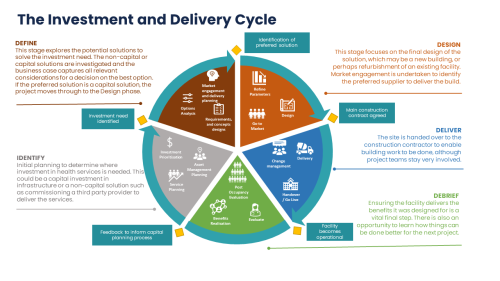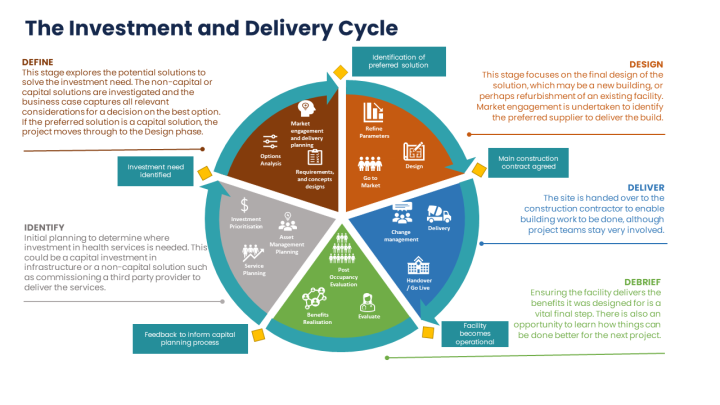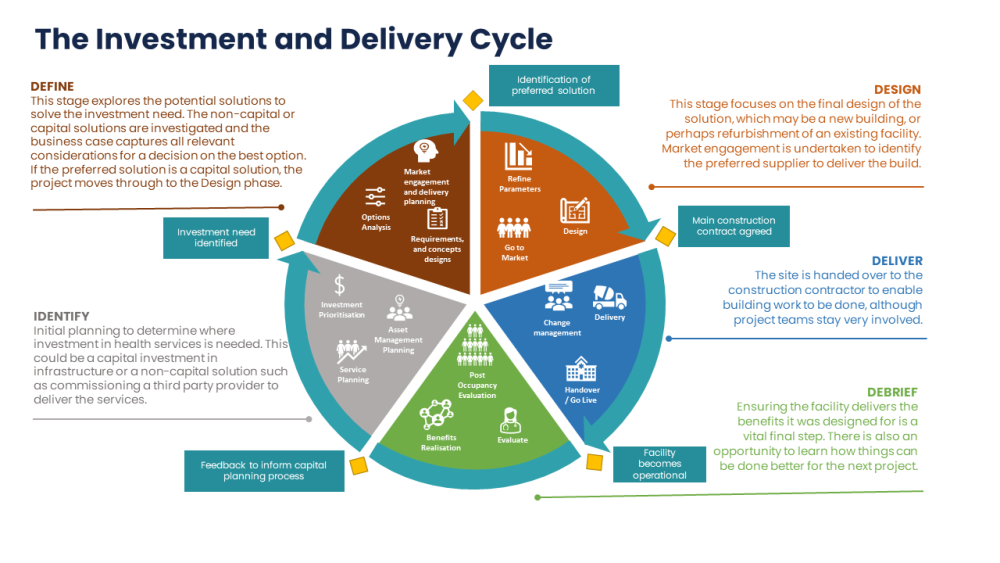


Investment and Delivery of Aotearoa New Zealand’s healthcare facilities
Building a new health facility isn’t as straight-forward as people may think. There are lots of things to consider to ensure that an investment of potentially many millions of dollars of public money is being spent in the best possible way to meet the healthcare needs of the local community.
Identify
Health facilities are an enabler of the delivery of health services. Therefore, the ‘Identify’ stage is crucial to ensure any proposed investment is geared to the needs of future health services and the goals of health delivery. This involves IIG, Hospital and Specialist Services working closely together to identify where and when investment is required to best support future models of care and planned health delivery.
Define
The ‘Define’ phase is where the team looks at what options are available to meet the investment need. This could include capital and/or non-capital solutions. If the preferred option requires capital investment in infrastructure, a business case is developed. Infrastructure investment can support health delivery by addressing the constraints of current facilities, including lack of space, layout not appropriate for current clinical practice, or the poor condition of the buildings. This can include the remediation of current facilities, the repurposing of existing facilities, or the construction of new buildings.
There is a great deal to consider so a business case can be put forward to be approved for capital funding. Depending on the size and complexity of the project, several business cases may be required, in alignment with the Government’s Better Business Case Framework. This process can take from 12 months to more than three years for large, complex proposals.
Design
Included in the detailed business case is a design of the preferred option that has been developed in partnership and consultation with stakeholders and experts. Once approval is granted, the design will be finalised. Health New Zealand | Te Whatu Ora has design guidelines which contain all the groundwork already completed, so project teams don’t have to start from scratch every time. Detailed design work is required for legislative reasons such as consent applications from local bodies and contracts for construction contractors. This phase, which can take 12 months to two years, may also include preliminary site works and enabling works, such as the demolition of an existing building, not part of the main construction contract.
Delivery
The next stage, the ‘delivery’ stage, is where the main construction can finally start once the capital funding has been granted and design has progressed to allow construction to begin. During the construction period, the project team ensures quality assurance and monitors build progress, as well as carrying out work such as equipment procurement and any workforce transformation planning required, ready for when the works are completed. Once construction crews have finished, which can take up to seven years for large scale complex projects, a milestone called practical completion is reached, where the building is handed over ready for commissioning. It is a very exciting day when the first patients can be treated in the new facility.
Debrief
And, finally, the project reaches the ‘debrief’ stage, where the building is assessed to ensure it is performing in the way the project team thought it would, and the benefits of the project can be formally realised and lessons learned fed back into the planning for the future.